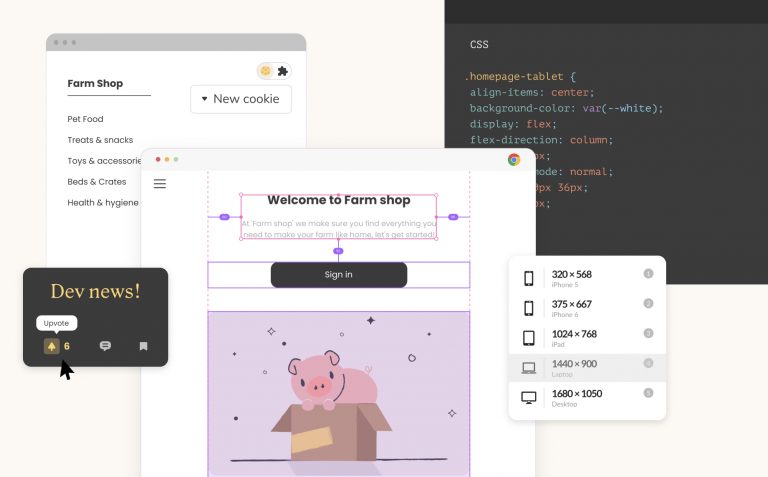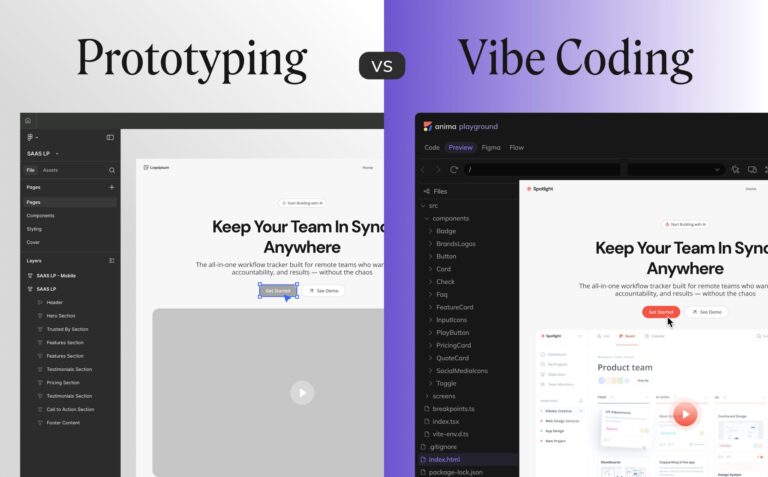How AI agents are reshaping design platforms: What designers and PMs need to know about AX4 min read
Reading Time: 3 minutesHow AI agents are reshaping design platforms: What designers and PMs need to know about AX
AI continues to revolutionize and reshape how we build products and use them. Agentic AI and agents are now the hot new thing – these agents are capable of retrieving up-to-date data from a particular type of source, executing tasks and orchestrating complex interactions. These agents bring a new challenge to software design called the Agent Experience (AX).
In this article, we’ll explore the key concepts behind AX, how it differs from existing technologies like APIs, and why understanding it is crucial for designers and product managers.
What are AI agents?
AI agents are mini apps and services that can act independently to achieve goals. (Learn more about AI agents on OpenAI’s Research Page). Unlike traditional software that waits for human commands, agents can:
- Analyze data and context.
- Make decisions based on predefined goals.
- Execute tasks without constant oversight.
Agents are defined with a particular purpose in mind and they have a “particular set of skills”. For example, an AI design agent could receive styles and colors and apply them to a component design. Agents could perform usability tests, adjust SEO and accessibility for a site or optimize a web app’s responsiveness as part of a bigger AI overhaul.
Agentic AI vs API
Until recently, companies provided APIs to allow integration with their services. In an AI agentic world, instead of APIs, each service provides an agent that can autonomously perform actions.
For example, an AI personal assistant could:
- Identify ideal vacation destinations using a weather agent.
- Find and compare flight + hotel deals.
- Book the trip and update the calendar automatically.
AI agents are:
- Autonomous: They retrieve information and take actions independently.
- Interactive: AI can recommend and execute tasks based on agent data.
- Complexity Management: AI can tailor services and workflows based on user preferences and incomplete instructions.
What is an Agent Experience (AX)?
AX refers to the design of platforms and systems to optimize interactions for AI agents. Just like UX focuses on human users and DX prioritizes developers, AX ensures agents can efficiently understand and operate within a system.
AX design considerations:
- Accessible APIs
- Machine-readable instructions
- Seamless task execution
Why does AX matter for design platforms?
1. Enhanced collaboration
AI agents automate tasks, suggest improvements, and optimize workflows. For example, an agent could:
- Generate design variations.
- Test designs across multiple devices.
- Detect and resolve accessibility issues.
(More about standardization efforts in AI at Anthropic.)
2. Lowering barriers to entry
Agentic AI simplifies complex tasks, making design and development more accessible. Platforms designed for AX empower both professionals and newcomers.
3. Competitive advantage through openness
Companies like Anthropic are working on the MCP (Model Context Protocol) to standardize Agentic AI interactions. Open protocols will enable broader collaboration and innovation.
How can designers and PMs apply AX principles?
1. Simplify API access
Ensure APIs are well-documented and easy to use, with authentication standards like OAuth and potential integration with MCP.
2. Provide machine-readable documentation
Agents need structured documentation to quickly interpret and act on platform features.
3. Optimize task flows
Identify and streamline common agent workflows, enabling seamless task execution without human intervention.
Anima’s vision for design collaboration
At Anima, we recognize AI’s transformative role in design. By adopting AX principles, we empower designers and product teams to:
- Automate tedious tasks.
- Focus on creativity and strategy.
- Achieve faster, more impactful results.
The future of agentic players and the need for a common protocol
The AI ecosystem lacks standardized protocols for agent interactions. Without these, agents struggle with inconsistent API design and execution flows.
A key industry player—or several—will need to define these standards, much like HTTP and TCP/IP shaped the internet.
Preparing for the future of AX
The rise of AI agents marks a paradigm shift in digital product design. Prioritizing AX unlocks innovation, efficiency, and user empowerment.
For designers and product managers, the key question isn’t whether agents will impact workflows, but how well their platforms will support them.


 Figma
Figma Adobe XD
Adobe XD Blog
Blog


